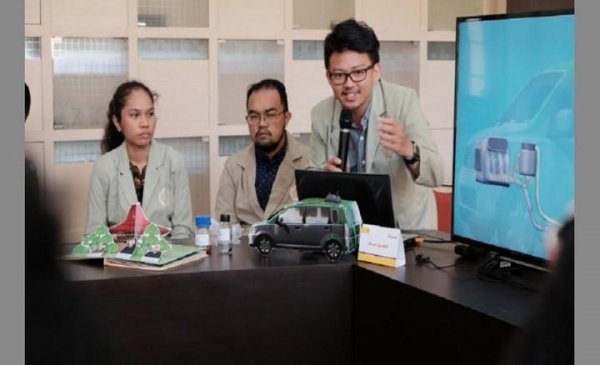According to foreign media reports, students at the University of Gadjah Mada (UGM) in Indonesia have designed a smart car that may convert plastic waste into low-emission fuel.

According to a statement issued by the university, its chemical engineering students formed a smart car Microalgae Cultivation Support (MCS) team, and her team leader Herman explained that the team developed a new technology that can Convert plastic waste into liquid fuel, thereby reducing exhaust emissions.
He added that he (she) added a pyrolysis reactor (into the exhaust pipe) to contain plastic waste and convert it into liquid fuel. The pyrolysis reactor tube can hold up to 2 kg of plastic waste. The pyrolysis process is used to treat plastic waste, and absorb the heat from the exhaust gas and use it. The temperature will be as high as 400-500 degrees Celsius. This type of plastic waste will be converted into liquid fuel and stored in a thermal reactor tube at the bottom of the body.
He also said that 2 kg of plastic waste can be converted into 2 L of liquid fuel. Except for polyvinyl chloride (PVC), other plastic waste can be converted into liquid fuel. Because the chloride contained in polyvinyl chloride can cause corrosion to mechanical equipment and is harmful to health, it is not used.
Microalgae cultivation support technology (equipment) can be installed in vehicles to reduce carbon dioxide emissions. Alayyubi added that in view of the large amount of plastic waste that would adversely affect the environment, the team thought of the above vehicle design. Since plastic waste is a derivative product (derivative product) of petroleum, why not convert it to petroleum?
However, because the conversion of plastic waste into liquid fuel requires a lot of energy, the team proposed to use the heat in the exhaust of the car to promote the chemical reaction.
UV accelerated aging test chamber
A UV accelerated aging test chamber is a specialized piece of equipment used to simulate the effects of long-term exposure to ultraviolet (UV) radiation on various materials and products. It is commonly used in industries such as automotive, aerospace, cosmetics, and electronics to evaluate the durability and performance of materials under accelerated aging conditions.
The chamber typically consists of a controlled environment with UV lamps that emit high-intensity UV radiation, simulating the UV exposure that materials would experience over an extended period. The UV lamps produce a spectrum of UV light, including UVA, UVB, and UVC, which can be adjusted to mimic specific environmental conditions.
The test specimens or products are placed inside the chamber, and the UV lamps are turned on to initiate the aging process. The chamber may also incorporate other environmental factors such as temperature, humidity, and airflow to simulate real-world conditions more accurately.
The accelerated aging process allows manufacturers to assess the effects of UV radiation on the materials' physical, chemical, and mechanical properties. It helps determine the degradation, discoloration, embrittlement, cracking, or other changes that may occur over time due to UV exposure.
UV accelerated aging test chambers are essential for quality control, product development, and compliance with industry standards and regulations. They enable manufacturers to evaluate the performance and lifespan of materials, optimize formulations, and make informed decisions about product design, materials selection, and UV protection measures.
UV aging test chamber, UV accelerated aging test chamber, UV test chamber
Dongguan Best Instrument Technology Co., Ltd , https://www.dgbestinstrument.com